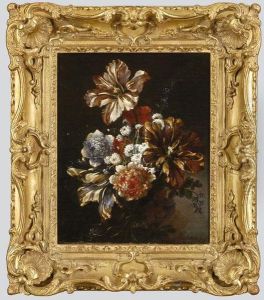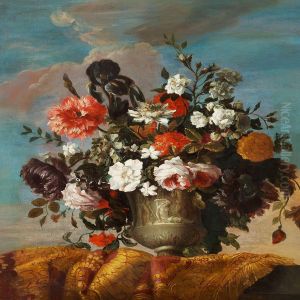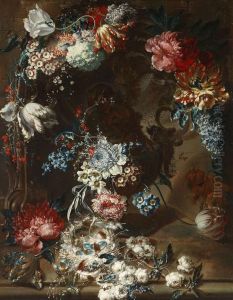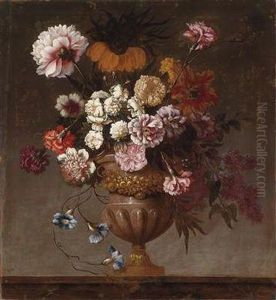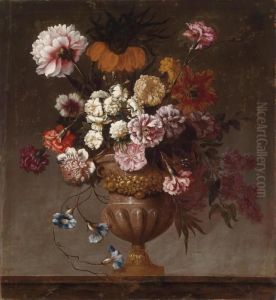Jean-Baptiste Ii Belin Paintings
Jean-Baptiste II Belin was a French painter known for his mastery in still-life compositions, particularly floral arrangements. Born in 1653, he was part of the Belin family of painters; his uncle, Jean-Baptiste I Belin de Fontenay (1653-1715), was also a painter, which sometimes leads to confusion between their works. Jean-Baptiste II was active during the late 17th century and early 18th century, a period that saw a great appreciation for still-life paintings in France.
Jean-Baptiste II Belin followed in his family's artistic footsteps and established himself as a talented painter in his own right. He is often associated with the style of Baroque still-life painting, which was characterized by an emphasis on richness, detail, and the interplay of light and shadow. His compositions typically included an array of flowers, sometimes arranged in intricate bouquets that showcased his skill in rendering textures and colors.
Belin's works were appreciated for their decorative quality and were often commissioned by the French aristocracy. Despite the popularity of still-life paintings during his lifetime, the genre would later be overshadowed by other styles and subjects in the art world. However, Belin's contributions to the genre were significant, and his paintings can be found in various art collections and museums to this day.
Jean-Baptiste II Belin's death in 1715 marked the end of his contributions to the art world, but his legacy continued through his works which are still admired by art historians and enthusiasts. His paintings are often seen as a reflection of the opulence and sophistication of the French court during the reign of Louis XIV and are valuable examples of Baroque still-life painting.
